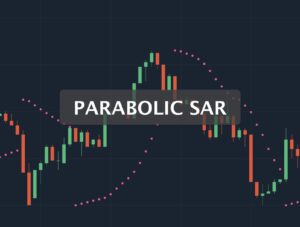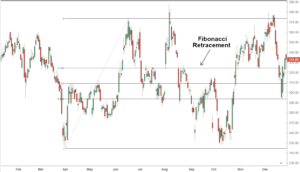The foreign exchange market, or forex for short, is a dynamic landscape where currencies ebb and flow constantly. For traders navigating this ever-changing environment, technical analysis tools become crucial allies. Among these tools, the Percentage Price Oscillator (PPO) stands out as a versatile indicator offering valuable insights into momentum, potential trend reversals, and overbought/oversold conditions. This comprehensive guide delves into the PPO’s inner workings, forex-specific interpretations, and practical strategies for incorporating it into your trading decisions.
Demystifying the PPO: A Blend of Moving Averages
At its core, the PPO is a momentum indicator based on the concept of moving averages. Moving averages smooth out price fluctuations, revealing the underlying trend. The PPO takes this concept a step further by comparing two moving averages and expressing the difference as a percentage. This transformation offers several advantages, particularly for forex traders:
- Standardization: The PPO’s percentage format allows for easier comparison across different currency pairs, eliminating the need to adjust for varying price scales.
- Momentum Gauge: The PPO reflects the current price movement’s strength relative to the historical average. A widening gap between the moving averages translates to a stronger momentum.
There are two main components that define the PPO:
- Moving Averages: The PPO typically utilizes two exponential moving averages (EMAs) due to their responsiveness to recent price changes. A common configuration employs a 12-period EMA (faster moving average) and a 26-period EMA (slower moving average). However, these settings can be adjusted based on your trading style and preferred timeframe.
- PPO Calculation: The PPO is calculated by subtracting the 26-period EMA from the 12-period EMA and then dividing the result by the 26-period EMA, expressed as a percentage.
PPO = [(12-period EMA) – (26-period EMA)] / (26-period EMA) * 100
The PPO oscillates above and below a zero line, reflecting the relationship between the two moving averages. A positive PPO indicates that the 12-period EMA is higher than the 26-period EMA, suggesting upward momentum. Conversely, a negative PPO suggests the opposite, with the 12-period EMA lagging behind the 26-period EMA, potentially hinting at downward momentum.
Interpreting the PPO for Forex Trading Decisions
Once you have the PPO plotted on your forex chart, it’s time to translate its squiggles into actionable insights. Here are some key interpretations to consider:
- Centerline Crossovers: A PPO crossing above the zero line can be interpreted as a potential buy signal, indicating that the shorter-term moving average is gaining ground on the longer-term one, suggesting a possible price uptrend. Conversely, a PPO crossing below the zero line could be a sell signal, hinting at a potential downtrend.
- Overbought/Oversold Levels: Similar to other oscillator-based indicators, the PPO can reach extreme highs and lows. Traditionally, these extremes are considered potential overbought or oversold zones. Common thresholds include +20% for overbought and -20% for oversold. However, these levels are flexible and can be adjusted based on the currency pair’s historical volatility. A PPO reaching an overbought zone suggests the price might be due for a correction, potentially presenting a short-selling opportunity. Conversely, an oversold PPO might indicate a buying opportunity as the price might be undervalued.
- Divergence: Divergence occurs when the PPO movement contradicts the price movement. For example, if the price keeps making new highs but the PPO fails to follow suit or even dips, this is a bearish divergence, potentially signaling a trend reversal. Conversely, a bullish divergence emerges when the price makes new lows but the PPO creates higher lows, suggesting a potential uptrend despite the temporary price dip.
Important Caveats: Remember that the PPO is a lagging indicator, meaning it reacts to past price movements. It shouldn’t be used in isolation. Always consider other technical indicators and fundamental factors to confirm trading signals generated by the PPO.
Crafting Your Forex Trading Strategy with the PPO
Now that you understand the PPO’s language, let’s explore how to integrate it into your forex trading strategy:
- Confirmation Tool: Employ the PPO alongside other indicators like trend lines, support/resistance levels, or volume analysis to strengthen trade signals. For instance, a PPO crossover above zero coinciding with a price breakout above a resistance level could be a compelling buy signal.
- Overbought/Oversold: Utilize the PPO’s overbought/oversold zones to identify potential entry and exit points.
- Divergence Spotter: Be on the lookout for divergences between the PPO and price action. These can provide early warnings of potential trend reversals, allowing you to adjust your positions accordingly.
- Dynamic Levels: Remember, the overbought/oversold thresholds (+20% and -20%) are just a starting point. You can adapt these levels based on the currency pair’s historical volatility. Analyze the PPO’s typical range for the chosen pair to define more relevant overbought/oversold zones for your specific trading strategy.
- Multiple Timeframes: The PPO can be applied across various timeframes, from short-term scalping to long-term position trading. Using the PPO on higher timeframes can help identify broader trends, while lower timeframes can assist in pinpointing entry and exit points within those trends.
Beyond the Basics: Advanced PPO Techniques
For seasoned forex traders seeking to extract even more value from the PPO, here are some advanced techniques to consider:
- Dual PPOs: Employ two PPOs with different moving average lengths to create a more comprehensive picture. For example, using a 12-period and a 50-period EMA combination can offer insights into both short-term and long-term momentum.
- PPO with Volume: Combine the PPO with volume analysis. A strong PPO signal accompanied by high trading volume strengthens the signal’s validity. Conversely, a weak PPO signal with low volume might indicate a less reliable trade opportunity.
- Custom PPO Levels: Explore using custom PPO levels based on statistical analysis of the chosen currency pair’s historical data. This can help refine your overbought/oversold zones for a more tailored approach.
Remember: Backtesting is crucial before deploying any new strategy. Test your PPO-based strategies on historical data to assess their effectiveness and identify potential weaknesses before risking real capital.
The PPO: A Forex Trader’s Ally, Not a Crystal Ball
The Percentage Price Oscillator empowers forex traders with valuable insights into momentum, potential trend reversals, and overbought/oversold conditions. By understanding its core principles, interpretations, and strategic applications, you can integrate the PPO into your trading toolbox to make more informed decisions. However, it’s paramount to remember that the PPO is a tool, not a guarantee. Always practice sound risk management and combine the PPO with other technical and fundamental analysis for well-rounded trading decisions.
So, the next time you navigate the dynamic world of forex, consider utilizing the PPO as your trusty momentum gauge to identify potential trading opportunities and enhance your overall trading experience.
Let’s Have Forex Trade Copying Service From Expert Traders!
Fx Pips Guru is a forex trade copying service provider company from expert forex traders. Let’s do Live Chat with our experts.




